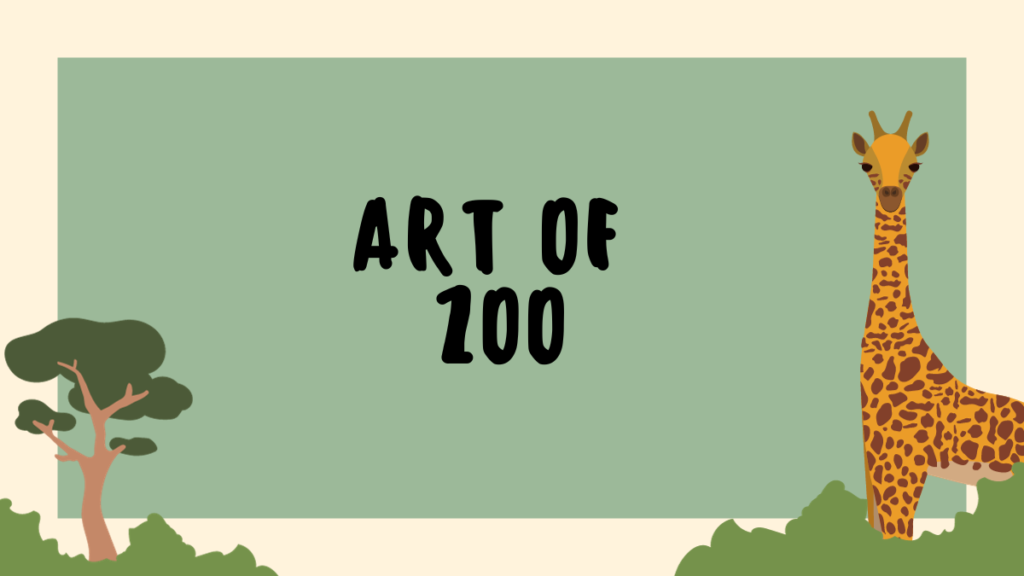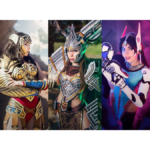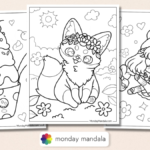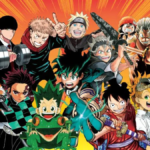Art has long served as a vehicle for people to share their thoughts and ideas with the world. It can bring individuals together regardless of their spoken languages. The “Art of Zoo,” which merges the natural beauty of animals with human artistic skill, is a fascinating subgenre of the art world. In this post, we’ll investigate the fascinating realm of animal-themed artwork by learning about its origins, relevance, and the creative minds behind it.
The Origins of Animal-Themed Art
· Ancient Inspiration
Artwork depicting animals dates back to ancient times, when they were held in high esteem and even considered sacred. The ancient Egyptian deity Bastet, for instance, was frequently represented in art alongside cats. This awe for animals as potent, protective, and spiritual symbols is the bedrock of zoo aesthetics.
· The Renaissance and Beyond
Artists such as Leonardo da Vinci and Albrecht Dürer began depicting animals in their paintings during the Renaissance in Europe. The increasing interest in nature was depicted in works such as those by Da Vinci and Dürer. This time period saw the first attempts at creating realistic depictions of animals in art.
Styles and Techniques in the Art of Zoo
· Realism
The realistic approach is widely used in zoo art. Artists strive for realism by depicting animals in all their fascinating complexity. This method encourages readers to feel a more personal connection to the material.
· Abstract Interpretations
When depicting animals, some artists choose a more abstract style. They employ bright hues, geometric shapes, and nontraditional shapes to strike an emotional chord and encourage introspection. This aesthetic invites viewers to find meaning in the animal realm in ways that are personal to them.
Contemporary Artists in the Art of Zoo
· Charley Harper
Charley Harper is well-known for his paintings of wildlife that are spare in appearance yet rich in detail. He builds a new visual language out of basic shapes and lines that manages to convey the character of each animal he depicts. Harper’s writings have had a lasting impact on the way people view and appreciate the natural world.
· Tiffany Bozic
Tiffany Bozic’s animal-centric surrealist dreamscapes transport the observer to a place where truth and fantasy blend. Her elaborate paintings generally depict creatures entangled with parts of nature, provoking contemplation of our shared relationship with the planet.
The Significance of Animal-Themed Art
Zoo art brings people and animals closer together. It’s a good reminder that we need to learn to live in harmony with other species if we want to keep the planet’s biodiversity intact. Art allows us to reflect on the diversity, complexity, and vulnerability of the living things with which we share this planet.
Conclusion
The fascinating “Art of Zoo” is where human ingenuity meets the wonders of nature. This field of art has been a source of innovation and creativity for centuries, from ancient civilizations to today’s artists. It serves as a timely reminder of our interdependence with the animal kingdom and the critical need to protect the planet’s unique and diverse ecosystems.
FAQs
What is the history of animal-themed art?
Animal-themed art has its roots in ancient civilizations like Egypt and gained prominence during the Renaissance.
What are some famous artists known for their animal-themed art?
Charley Harper and Tiffany Bozic are renowned contemporary artists in this genre.
How does animal-themed art contribute to conservation efforts?
It raises awareness about the beauty and importance of wildlife, promoting conservation initiatives.
Can anyone appreciate the art of zoo, or is it reserved for animal enthusiasts?
Anyone can appreciate animal-themed art, as it often conveys universal themes and emotions.
Where can I explore more animal-themed art?
You can discover a wide range of animal-themed art in galleries, museums, and online platforms dedicated to the genre.







